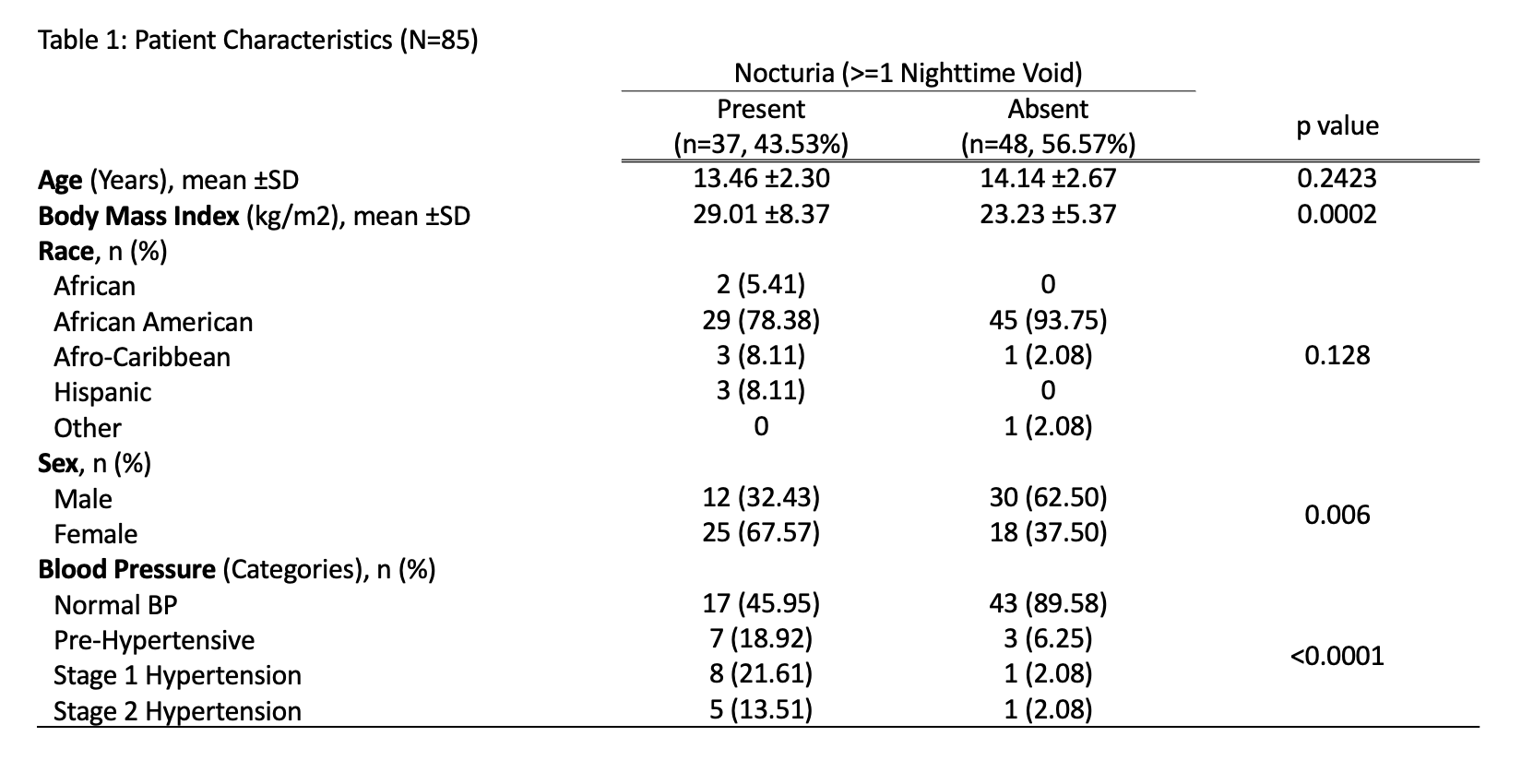Cardiology
Cardiology 3
718 - Relation Between Nocturia and Blood Pressure Elevation in Adolescents
Monday, May 1, 2023
9:30 AM - 11:30 AM ET
Poster Number: 718
Publication Number: 718.4
Publication Number: 718.4
Tasmia J. Promi, State University of New York Downstate Medical Center College of Medicine, ozone park, NY, United States; Gulzhan Tologonova, State University of New York Downstate Medical Center College of Medicine, Brooklyn, NY, United States; Sarita S. Dhuper, Suny Downstate Medical center, Old Westbury, NY, United States; Meseret Tena, State University of New York Downstate Medical Center College of Medicine, Brooklyn, NY, United States; Monique Hanono, Suny Downstate, Brooklyn, NY, United States; Marie-Claire Roberts, SUNY Downstate Health Sciences University, Brooklyn, NY, United States; Louis Salciccioli, Suny Downstate Health Science Center, Brooklyn, NY, United States; Jeffrey P. Weiss, State University of New York Downstate Medical Center College of Medicine, New York, NY, United States; Jason M. Lazar, State University of New York Downstate Medical Center College of Medicine, Brooklyn, NY, United States

Tasmia J. Promi, BA (she/her/hers)
Doctor of Medicine Candidate
State University of New York Downstate Medical Center College of Medicine
ozone park, New York, United States
Presenting Author(s)
Background: Nocturia, defined as waking to void during the hours of intended sleep, is among the most prevalent urologic complaints in the general population. While historically viewed as a disorder of older men with prostatic enlargement, nocturia is now recognized as being associated with a variety of non-urological conditions occurring in both sexes. Hypertension (HTN) is among the common associated conditions as blood pressure (BP) elevation has been found to be strongly associated with the presence of nocturia in adults. Accordingly, the presence of nocturia has been proposed to be a useful method to screen for undiagnosed hypertension. Although nocturia is common in children, the relationship between BP, which varies by height and weight in children, and nocturia hasn’t been studied in the pediatric population.
Objective: The objectives of this study were to determine the relation between BP elevation and nocturia in adolescents and to compare self-reported frequency to frequencies obtained by nocturnal voiding-diary.
Design/Methods: Patients aged 10-18 years were recruited from pediatric clinics. Demographic data and conventional BP measurements were collected. Consenting patients completed nocturnal voiding-diaries and were followed up by phone-call. Nocturia was pre-defined as 1 or more voids recorded by voiding diary. Univariate analyses and logistic regression with nocturia as the dependent variable were performed.
Results: Eighty-five patients were collected. 25(29.41%) of study participants had HTN, defined as elevated BP for 2 or more readings, that was treated. Of the participants that reported nocturia, 17(45.95%) had normal BP and 20(54.05%) had elevated BP. While 28(32.94%) of the study participants self-reported waking up at night to urinate, it was established from the data collected using diaries that 37(43.53%) of the participants had one or more nighttime void. Study participants with treated HTN were 2.64 times likely to have nocturia when controlling for BMI(p=0.001).
Conclusion(s): These preliminary data suggest nocturia is common and is strongly related to BP elevation in adolescents. Since there is much lower prevalence of comorbid conditions such as diabetes, urological conditions, and congestive heart failure that are known to cause nocturia in adolescents as compared to adults, fewer confounding variables would strengthen the magnitude of the BP and nocturia link. The prevalence of nocturia may also be underestimated in the pediatric population. Study findings suggest that history of nocturia can be a simple method of identifying adolescents at higher risk of having HTN.

